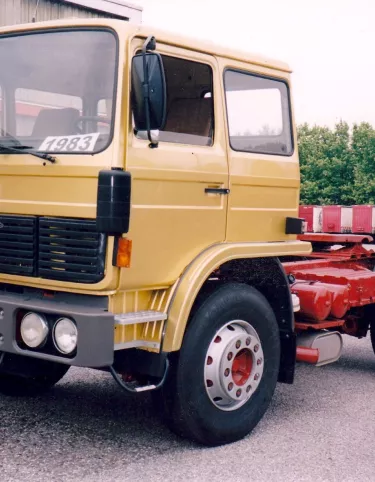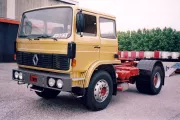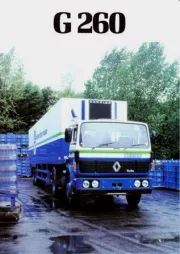Welcome to Renault Trucks Content Hub
Report
The iconic Renault G260 and Renault Virages
Jul. 11 2023

RENAULT G260 - 1983
The G260 has been designed to be as economical as possible. It has opened a new niche for long and medium-distance transport with a focus on payload and profitability.
Available as a rigid or tractor unit, the G260 is designed to achieve the lowest possible cost per kilometre. This is achieved by making the vehicle lighter overall, reducing fuel consumption through a new 8-speed synchronised gearbox and a 260hp turbocharged and cooled engine.
It was voted "Truck of the Year 1983" by a panel of European journalists.
V.I.R.A.G.E.S - 1985
Starting in 1980, the V.I.R.A.G.E.S. program (Véhicule industriel de recherche pour l’amélioration de la gestion de l’énergie et la sécurité - Commercial vehicle for research into the improvement of energy management and safety) focused on studying a certain number of technical options designed to be featured in future production vehicles. This program resulted in the building of two VE (experimental vehicle) prototypes, named the VE 10 (1985) and the VE 20 (1988).
VE 10
With its high mounted cab reached by a spiral staircase and its huge, bulbous windscreen, the VE 10 prototype presented by Renault Trucks in 1985 has plenty to make a powerful impression. Highly aerodynamic, the VE 10 rig includes a streamlined semitrailer with a fishtail rear to reduce the aerodynamic drag, and therefore fuel consumption. The very original VE 10 is a 6x4 tractor with single tyres on the two drive axles. It uses nitrogen cushions for its tandem suspension, disc brakes on all axles and also its totally automated gearbox.
VE 20
VE 20 scores a number of world firsts. The chassis is made of curved extruded aluminium and standard symmetrical cross members. The suspension includes a strut which, in addition to playing a role in guidance, is also part of the oil-pneumatic suspension system. Having a particularly compact engine unit, the driveline stands out for. The engine is virtually horizontal with the gearbox positioned beneath it.The fully automatic gearbox features a shift "under torque", meaning gear changes take place without any interruption in traction. The braking system is made up of six hydraulically controlled disc brakes for a swifter response. All surveillance and management functions are carried out by electronic devices. Featuring aerodynamic forms tested in wind tunnels, it offers a flat floor with forward and lateral visibility close to maximum possible values. The ergonomic display on the dashboard shows all the required information.
The V.I.R.A.G.E.S. program made it possible to expand knowledge of certain vital functions and explore innovative technologies. The VE 10 and VE 20, genuine laboratory vehicles, opened the way to new architectures and technologies, some of which were applied, particularly in the legendary Renault Magnum.



